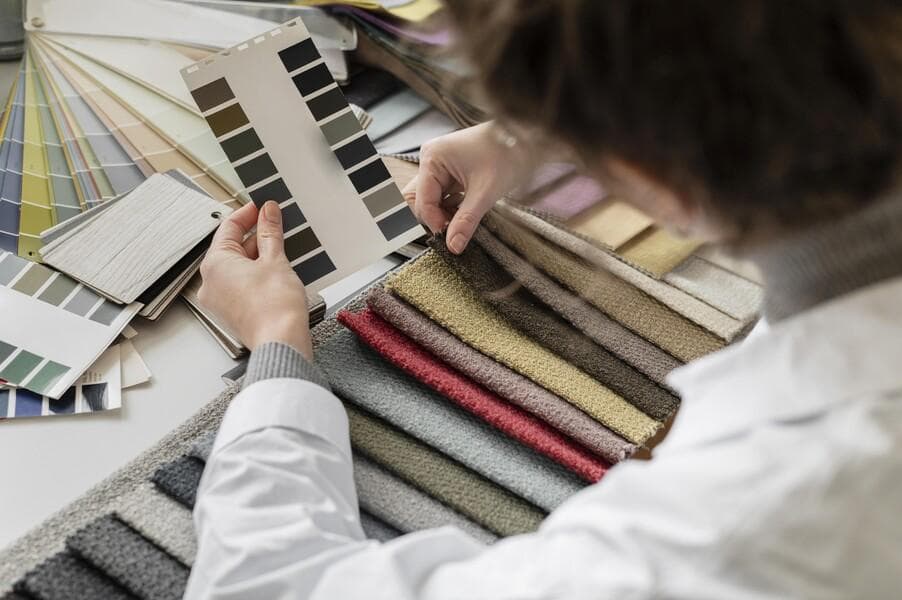
Green Groove: Mixing Fabrics for Sustainable Swag
The demand for sustainable and eco-friendly products has been on the rise, and for good reason. As consumers become more conscious of the environmental impact of their purchases, businesses have been exploring ways to create products that are not only stylish and functional but also environmentally friendly. One way that companies can achieve this is by mixing fabrics to create reusable products that are durable and long-lasting.
The Power of Fabric Blending
There's an art to combining fabrics to create sustainable products that not only serve their purpose but also minimize the impact on the environment. The right blend of materials can lead to durable, stylish, and eco-friendly products that consumers love. Let's explore the magic of fabric mixing and how it's changing the game in the world of sustainable swag.
The Versatility of Cotton
Cotton is a natural fiber that has been a staple in the textile industry for centuries. It's known for its softness and breathability, making it ideal for various applications, from clothing to home textiles. When mixed with other materials like polyester or nylon, cotton can enhance its durability and resistance to wrinkles, making it a fantastic choice for reusable products.
The Durability of Polyester
Polyester, a synthetic fiber, is a workhorse in the world of reusable products. Its strength and durability make it a top choice for items like reusable bags and outdoor gear. When blended with natural fibers like cotton or bamboo, polyester can add a layer of softness without sacrificing durability. It's a testament to the possibilities of combining materials for maximum impact.
Bamboo: The Sustainable Champion
Bamboo is another natural fiber that's gaining recognition for its role in creating eco-friendly products. As a highly sustainable material, bamboo grows rapidly and requires minimal water and pesticides. When mixed with other materials like cotton or spandex, it can produce a fabric that's not only soft and breathable but also stretchy. Bamboo demonstrates the potential of blending materials to create a harmonious and sustainable whole.
Recycled Polyester: Eco-Friendly Innovation
Recycled polyester is a rising star in the world of sustainable fashion. This synthetic fiber is made from recycled plastic bottles, providing an eco-friendly alternative to traditional polyester. When combined with other materials like organic cotton, it can result in a fabric that's both durable and sustainable, demonstrating the potential for innovation and environmentally responsible choices.
Balancing the Blend
When mixing fabrics to create reusable products, it's crucial to consider the unique properties of each material and how they will work together. For example, a fabric that is too stretchy may not be ideal for a reusable shopping bag, while a fabric that is not breathable may not be comfortable for clothing. Finding the perfect balance is key to creating products that meet consumer needs and environmental standards.
One way to ensure that fabrics blend seamlessly is to conduct a small test run before producing a large quantity of products. This approach allows companies to understand how the fabrics interact when mixed and make any necessary adjustments to optimize their performance. It's a crucial step in the pursuit of eco-friendly and functional products.
Cost-Effective and Eco-Friendly
In addition to being eco-friendly, using mixed fabrics in reusable products can also be cost-effective. By leveraging a combination of natural and synthetic fibers, companies can create products that are both durable and affordable. This approach benefits both businesses and consumers, making sustainability accessible to a broader audience.
Reducing Waste Through Durability
Furthermore, using mixed fabrics in reusable products can help reduce waste. By creating products that are designed to last, consumers are less likely to dispose of them after just a few uses. This not only saves consumers money but also reduces the amount of waste that ends up in landfills, contributing to a more sustainable and responsible approach to consumption.
In Conclusion: The Future of Sustainable Swag
In conclusion, mixing fabrics to create reusable products is an excellent way for companies to create sustainable and eco-friendly products that are also durable and affordable. By considering the properties of each material and conducting a small test run, businesses can create products that are both functional and environmentally friendly. With the demand for sustainable products on the rise, using mixed fabrics in reusable products is an idea whose time has come.
The fashion industry and other consumer-driven sectors are gradually embracing the potential of material blending to strike a harmonious balance between style, functionality, and sustainability. By continuing to explore and implement these innovations, we can look forward to a future where sustainable swag becomes the norm, benefiting both our closets and the planet. It's a green groove worth dancing to.
Ashish Kumar
Have any questions?
Contact UsRead More Articles

The Power of PaaS: Elevating Corporate and Industrial Products Procurement
Read in 4 min
06 September 2023

Revealing the Magic of Quality Control in the Enchanted Domain of Apparel Procurement!
Read in 2 min
14 August 2023

The Guardian Angels of the Road: How High-Visibility Uniforms Safeguard Delivery Riders
Read in 3 min
03 August 2023

Stepping Up the Game: The Definitive Guide to Quality Control in B2B Workwear Manufacturing
Read in 4 min
31 July 2023

Procurement as a Service vs. Traditional Agents: A Comparative Analysis
In the world of procurement, where businesses strive to optimize their supply chains and source products efficiently, there are two primary approaches: the traditional method involving procurement age
Read in 2 min
22 September 2023
Ready To Get Started?
Have questions? We're here to help. Contact us now.